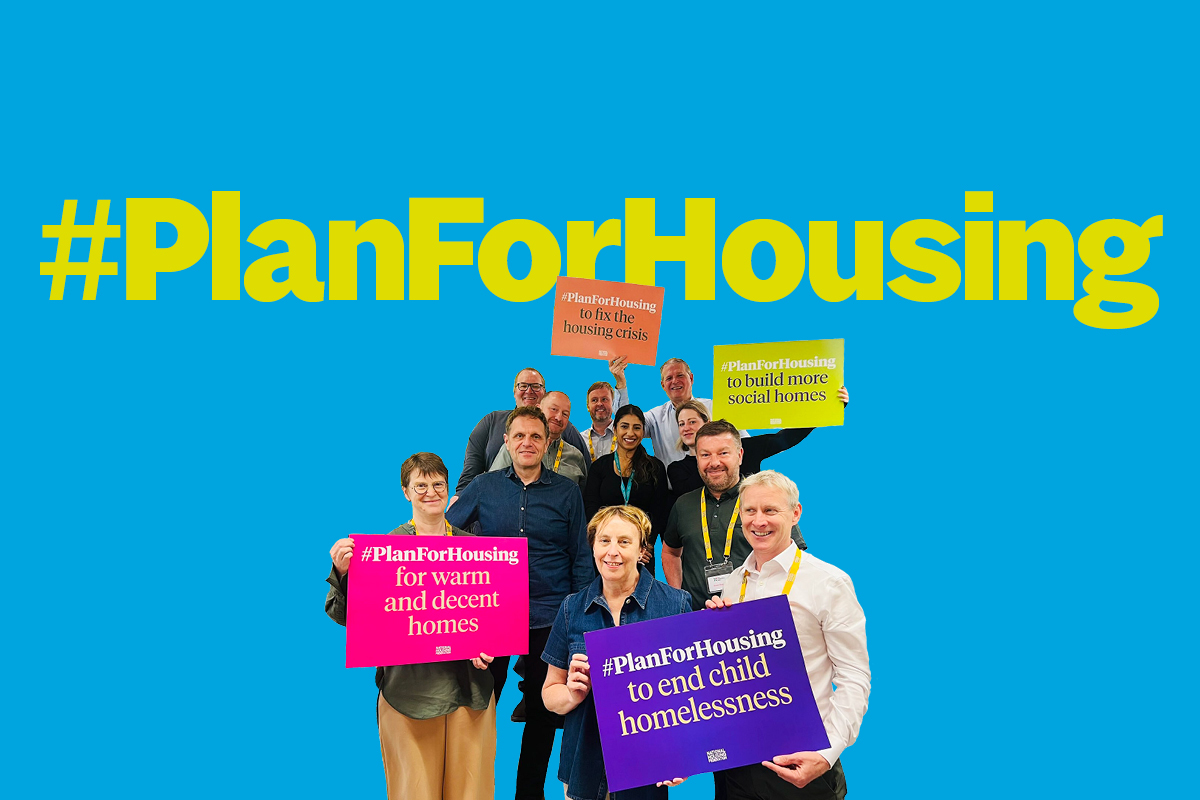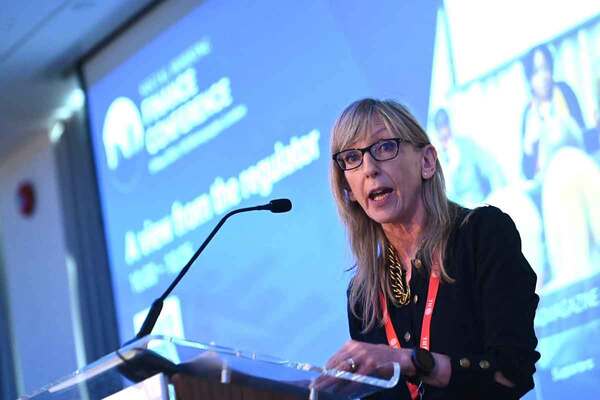You are viewing 1 of your 1 free articles
What’s keeping the board awake at night?
David Levenson, the founder of Coaching Futures, highlights eight issues on which housing board members should focus in 2025
Much of my work nowadays is with boards of housing providers, either in meetings or at off-site events. As well as being a non-executive director, my role is to be a coach, trainer, advisor, facilitator, evaluator or observer.
I regard it as a privilege to be given access to boardrooms. I try to ensure that whatever role I am given provides value to the board in the moment.
Being on a board is time-consuming, and being an effective board takes a lot of effort; it is one of the hidden costs of practising and maintaining sound governance for the organisation.
One question I ask board members these days is, “What is keeping you awake at night?”
The purpose of the question is to reveal the collective mindset in the boardroom. Are we focusing on what is important, not just what is immediate or perhaps even trivial?
As 2024 concludes – a year of change and challenge, politically, economically and socially – there is much for board members to be concerned about, but there are also missions and visions to uphold.
Here are eight issues which, if not actually keeping board members of housing providers awake, they should be focusing on:
1. Housing providers are under the microscope like never before
In the last week of November 2024, social housing providers were assailed with a barrage of difficult headlines such as: “RSH data reveals half of tenants unhappy with landlord complaints-handling”; “Nearly 22,000 orders made against landlords in 2023-24 compared with under 7,000 in the previous year, according to the Housing Ombudsman”; and “Regulator of Social Housing reports 66% rise in whistleblowing allegations in 2023-24”.
Housing associations may only make national headlines very occasionally, but when they do, it is usually due to a catastrophic event which reflects on the whole sector. The thought of bad headlines in the media is enough to disturb the sleep of most board members.
2. The regulator is calling the shots, the ombudsman is scoring the bull’s-eyes
While the Regulator of Social Housing (RSH) has new armoury at its disposal – consumer ratings and inspections – it is still relatively early days in terms of what impact the new sanctions will have. In the meantime, the Housing Ombudsman has levied almost £5m in fines in the past year.
“Boards have good reason to worry that they may face increased costs just to ensure that the new consumer standards can be met. Allocating funds to satisfy new regulatory requirements might limit their ability to invest in innovative practices”
The top three findings, by category, in the ombudsman’s annual report for 2023-24 were property condition (4,368), complaints-handling (3,710) and anti-social behaviour (1,252). Together, the number of findings almost tripled when compared with the previous year.
Boards need to be certain that they can validate whether their properties meet the new Decent Homes Standard and that residents who complain are not being fobbed off.
3. The customer is king, but will consumer regulation stifle innovation?
The short answer is: it shouldn’t. However, boards have good reason to worry that they may face increased costs just to ensure that the new consumer standards can be met. At the same time, cost of living pressures are squeezing landlords’ financial margins. Allocating funds to satisfy new regulatory requirements might limit their ability to invest in innovative practices.
Greater scrutiny could lead to landlords adopting a more conservative approach, for example in the use of new technologies for data-sharing. The penalties for data breaches are now punitive, with the information commissioner able to levy fines of up to £17.5m or 4% of annual turnover, whichever is higher, for what are termed ‘severe violations’.
Boards should ask whether their approaches to new services are genuinely resident-centric. Are opportunities being taken to co-design solutions for service failures? Are quality standards being aligned with environmental and decarbonisation targets, thereby encouraging innovative approaches to construction, retrofitting and energy efficiency?
4. Safety is the new watchword for boards
Before 2017, housing association boards did not have the safety of residents at the top of the risk register. The Grenfell fire changed this. Further fatal tragedies have only underlined that resident safety is the issue keeping board members’ eyes open more than any other.
A whole raft of new statutes and regulations have come into force, starting with the Fire Safety Act 2021, swiftly followed by the Building Safety Act 2022, which introduced a new framework for higher-risk buildings and created a new regulator.
As if this isn’t enough for board members to get their heads around, the protection of residents’ data has rocketed up the risk ladder.
The key issue for boards to consider is how they get access to the expertise they need to scrutinise and gain assurance about their residents’ safety and welfare. The solutions are likely to be different, depending on the size and scale of the landlords’ operations.
5. It’s all about the money – and it’s running out
The amber lights have been flashing for some time; most boards now have to get under the skin of an arcane piece of treasury jargon: loan covenants. The ‘golden rules’ designed to protect landlords’ balance sheets have eroded gradually, starting with the exclusion of major repairs from the calculation of interest cover, on the flimsy grounds that it is capital expenditure (until their auditors tell them it isn’t), followed by a general watering down of the level of cover, to 90% or even 85%.
In reality, it means that some landlords are now posting operational deficits for which the only solution is to sell stock that is deemed surplus to requirements, perhaps because it is ‘non-core’ or beyond economic repair. As a palliative, it will buy time, but the family silver can only ever be sold once.
“Some landlords are now posting operational deficits for which the only solution is to sell stock that is deemed surplus to requirements”
Others are exploring ‘off-balance sheet’ solutions, an elegant term which basically means when the banks and capital markets will no longer lend them money to build, they will need investment in the form of equity, which results in social landlords starting to take on the characteristics of private businesses.
The RSH has been scratching its corporate head over how to regulate for-profit housing providers ever since their introduction about 15 years ago. How will they cope when the Blackstones of this world buy up pieces of the L&Qs? And how will residents’ interests be protected?
Plenty here for board members to chew on, along with this year’s Christmas turkey.
6. Squeaky pips – will volume social housing as we once knew it be built again?
Here is the reason why the squeeze on finances matters: every board wants their organisation to build new social homes. They see it as their raison d’etre and it aligns with what the government wants from them. But with balance sheets gradually shrinking, confidence in cross-subsidy from private sales having been eroded and precious little coming over the horizon from the Treasury in the form of capital subsidy, we seem to be past the high-water mark of large-scale development of social housing.
Whether or not Section 106 is resuscitated in another form, or local authorities are enabled to come to the party, the halcyon days of volume social housing may have ended. This is a bitter pill for board members to swallow.
7. Combatting the next crisis with the tools from the last one
Another favourite question for boards is, “What do you think is the next big problem or disaster coming down the line?”
This one always manages to get the collective juices flowing. Boardroom harbingers of doom with whom I have worked lately have imagineered numerous plausible crises, including the collapse of the social care system, perhaps triggered by local government bankruptcy, multiple cyberattacks, breakdowns in the NHS and the criminal justice system, more frequent and volatile extreme weather events, and even social unrest fomented by populist politicians or owners of social media platforms.
Some catastrophies, whether or not they feature on risk maps, may be regarded as too remote, or too difficult to plan for. But we are constantly being reminded that the world’s population was almost brought to its knees by the lack of a vaccine.
8. The rise and rise of housing as a social business
The flipside question for boards is, “What’s the next biggest opportunity?” These vary, of course, depending on local and institutional circumstances.
However, a common theme that has emerged, ironically in part due to organisations’ experiences during COVID and its aftermath, is a recognition of the opportunities now available for housing providers to widen their contribution to local areas and society at large.
Community investment, historically seen as an arm’s-length activity for social landlords, has now become mainstream. Aided by moves to integrate health and care services in many localities, social housing now has a seat at the table it never enjoyed before.
David Levenson, founder, Coaching Futures











